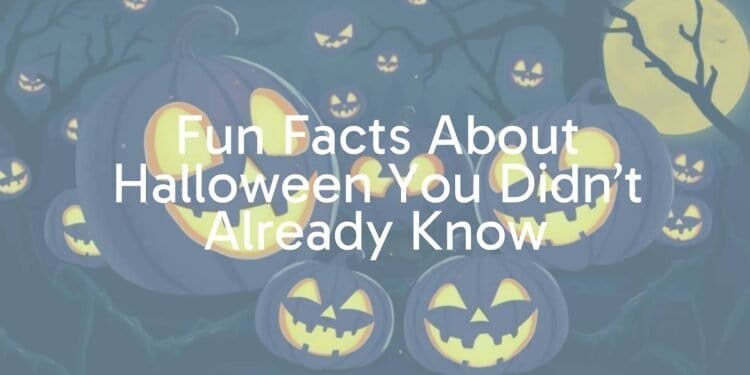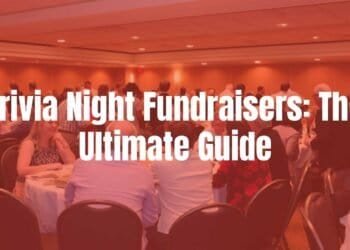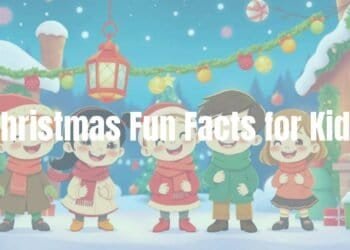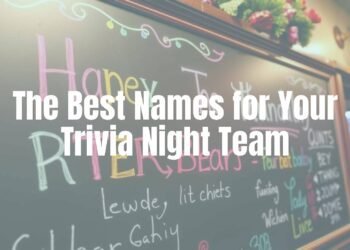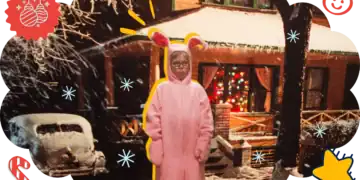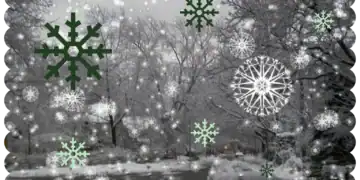Halloween is known for spooky costumes, candy, and jack-o’-lanterns, but it has a much longer story. It grew from ancient customs and surprising history that many fans don’t hear about. From a Celtic harvest festival to a modern shopping powerhouse, Halloween carries many traditions, folktales, and fun facts. Here are details that can make you the most interesting ghoul at any Halloween get-together this year.
What Is Halloween and Why Is It Celebrated?
At its core, Halloween marks the change from autumn to winter, a time when many once believed the line between the living and the dead grew thin. Today it’s mostly a fun, non-religious holiday, but its start was tied to farming cycles and spiritual beliefs from long ago.
When Did the Tradition of Halloween Begin?
Halloween is very old, with traditions going back about 6,000 years. Its beginnings are in Ireland, around 4000 B.C., long before Christianity. Few holidays have lasted this long, growing and shifting over thousands of years.
How Did Halloween Get Its Name?
The word “Halloween” is short for “All Hallows’ Evening,” the night before All Saints’ Day on November 1. The Oxford English Dictionary links “Halloween” to “All Hallow’s Eve.” In 1773, Scots wrote it as “Hallow-e’-en,” and poet Robert Burns helped fix the modern spelling in a poem. That’s how we got “Halloween.”
What Are the Origins of Popular Halloween Symbols?
Many Halloween symbols go back to old ideas and dark stories. The black-and-orange color pair comes from the Celtic festival of Samhain. Black stands for the “death” of summer and the darker part of the year. Orange stands for the bright life of the fall harvest. Scarecrows reflect the holiday’s farm roots too. The first ones were made by Greek farmers to protect crops.
Surprising Historical Facts About Halloween
Halloween’s past is full of changes. What began as serious rites to calm spirits has become a global event, yet parts of the old beliefs still show up in what we do today.
Which Ancient Festival Sparked Halloween’s Traditions?
Halloween grew from the Celtic festival of Samhain (said “SAH-win,” not “Sam-hane”). This key Gaelic festival marked the end of harvest and the start of winter, the “darker half” of the year. People in Ireland, the U.K., and Northern France thought that on October 31, the border between the living and the dead thinned. They lit big bonfires and wore costumes to confuse or scare off spirits that might cause trouble.
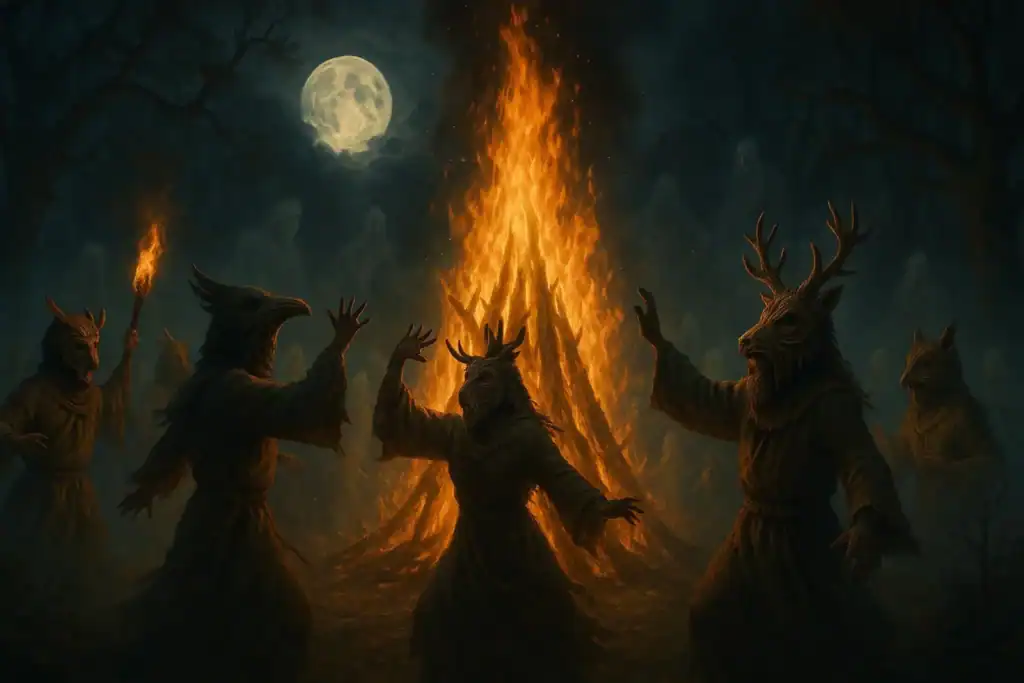
Why Were Turnips Once Used Instead of Pumpkins?
Before pumpkins took over, people in Ireland carved turnips, potatoes, and beets to ward off evil. Irish immigrants in the 1840s brought this habit to the U.S. and found pumpkins bigger and easier to carve. Turnips faded, and pumpkins became the base for jack-o’-lanterns as we know them.
How Did Trick-or-Treating Evolve Over the Centuries?
Trick-or-treating has a longer, more mixed past than just knocking on doors for candy. It draws from “souling” and “mumming” in medieval times. In “souling,” kids went door-to-door on All Souls Day, offering prayers for the dead in return for food. “Mumming” had people dress as ghosts and demons and perform for food and drink. Candy was not always the reward. Before the 1950s, kids often got cake, fruit, nuts, coins, or small toys. In the 1950s, candy makers pushed their sweets for Halloween, and candy became the main prize.
Which Unique Halloween Customs Exist Around the World?
Outside the U.S., there are many local traditions. In Ireland, celebrations can include fireworks, barnbrack (a fruitcake), and bonfires. In Germany, people hide knives on Halloween night to keep returning spirits from getting hurt. These different customs show how each place puts its own spin on the holiday.
Unexpected Origins of Halloween Traditions
Some of the best-known Halloween habits come from old stories, superstition, and practical needs from earlier times.
Where Did Jack-O’-Lanterns Really Come From?
The jack-o’-lantern comes from an Irish legend about “Stingy Jack,” a drunk trickster who fooled the devil three times. When Jack died, he was turned away from both heaven and hell. He wandered the Earth with a glowing coal in a hollowed turnip to light his path. People called him “Jack of the Lantern,” later “Jack o’Lantern.” Irish immigrants in America switched to pumpkins because they were easier to carve, and the tradition stuck.
What Is the True Story Behind Black Cats and Witches?
Black cats and witches have been linked for centuries. In the Middle Ages, black cats were often seen as a bad sign and tied to the devil. Over time they became linked with witches and black magic, and many feared them. Today many places see black cats as lucky, and shelters promote adopting them in October, using careful screening to make sure each cat goes to a safe, caring home.
Why Are Black and Orange the Main Colors of Halloween?
Black and orange go back to Samhain. Black marks the “death” of summer and the move into cold, dark months. Orange stands for warmth and the fall harvest. Together they show both remembrance and celebration, darkness and light.
Bizarre and Lesser-Known Halloween Practices
Past the usual candy runs and costumes, Halloween has also featured strange customs, some of which still live on in certain places.
Which Countries Celebrate with Fireworks or Hide Knives?
In Ireland, fireworks are part of the fun on Halloween. In Germany, many people hide knives for the night so returning spirits won’t get hurt. It reflects care for visitors from beyond, even if they are ghosts.
How Did Halloween Marriages and Love Rituals Begin?
In the 1700s, Halloween was also a time for young women to look for signs about love. As History.com notes, women tossed apple peels over their shoulders to see if the fallen shape showed the initials of a future husband. Bobbing for apples could “predict” who would marry first. Another ritual had someone stand in a dark room with a candle before a mirror to try to see a future spouse’s face.
Which Towns Changed Their Names for Halloween?
One U.S. city leans into Halloween so much it changes its name for October. In 2022, Conway in Horry County, South Carolina, declared itself the “City of Halloween” for the whole month to boost tourism and business. It was a hit and became a yearly event, adding more displays, activities, and decorations each time.
Curious Candy Facts and Sweets History
No talk of Halloween is complete without candy. From early treats to the modern candy craze, the story of Halloween sweets is long and colorful.
What Was the First Popular Halloween Candy?
Before candy makers pushed Halloween sweets, people gave out homemade treats, fruit, nuts, or small toys. Mass-produced candy became standard in the 1950s after companies began marketing it for the holiday. There isn’t a single “first” big hit, but that marketing wave locked candy into the tradition.
What Was Candy Corn Originally Called?
Candy corn, invented in the 1880s by George Renninger, was once sold as “chicken feed” by the Goelitz Confectionery Company. It looked like corn kernels, and the boxes showed a rooster to appeal to farm life. After World War I, the name switched to “candy corn.” The recipe has stayed mostly the same since the 1880s. About 35 million pounds of it sell each year.
When Did Parents Start Stealing Their Kids’ Candy?
Many parents sneak a few pieces. A 2019 YouGov poll found that 74% of parents with kids under 18 admit to eating some of their children’s Halloween candy. It’s a quiet, modern family habit.
Halloween by the Numbers: Record-Breaking Facts
Halloween also brings big crowds, giant pumpkins, and serious spending. Here are some standout numbers.
What Are the Largest Halloween Parades and Displays?
New York City often leads the way. The Greenwich Village Halloween Parade is the largest in the U.S., drawing about 2 million spectators and around 70,000 costumed walkers. It started in 1973 when puppeteer Ralph Lee planned a simple walk for kids and friends. In Providence, Rhode Island, the Jack-O-Lantern Spectacular at Roger Williams Park Zoo shows more than 6,000 carved pumpkins and draws 115,000 to 140,000 visitors each year. For lit pumpkins on display, Keene, New Hampshire, holds the Guinness World Record with 30,581 lit jack-o’-lanterns in October 2013, a mark it has topped eight times.
How Big Was the Heaviest Pumpkin Ever Carved?
Giant pumpkin growing is a competitive hobby, and the records are huge. A Swiss garden once grew a 2,096-pound pumpkin, but that mark fell. In October 2023, Travis Gienger set the current Guinness World Record with a 2,749-pound pumpkin. He nicknamed it “Michael Jordan” as a nod to jersey number 23 in the year 2023. He said it started “basketball round” before swelling into a record-setter.
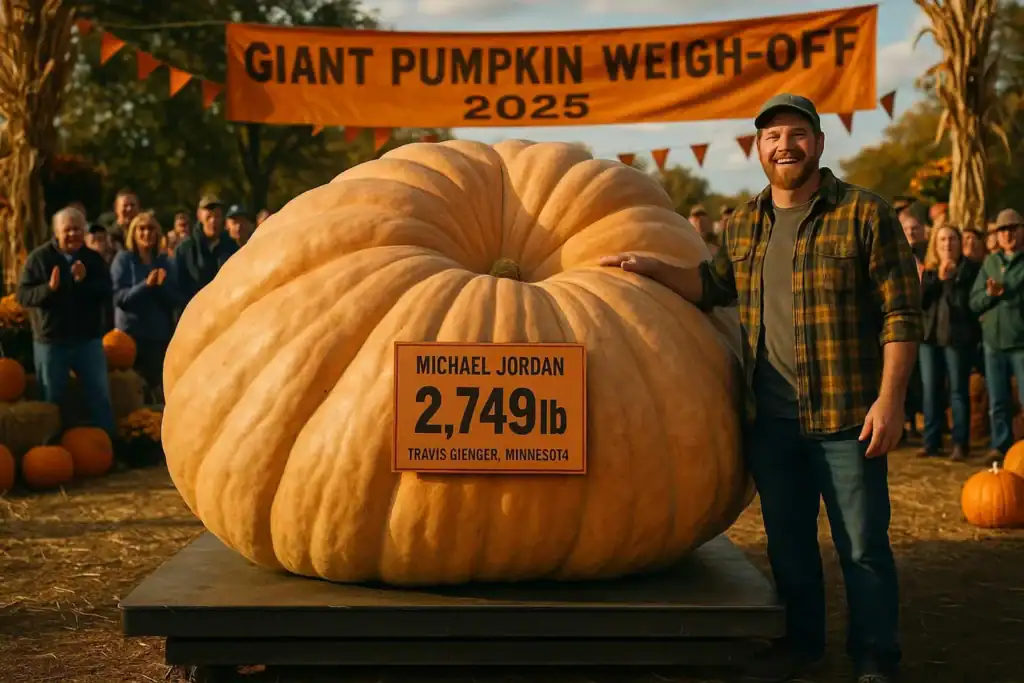
How Much Do Americans Spend on Halloween Each Year?
Halloween spending is massive, second only to Christmas for many shoppers. The National Retail Federation (NRF) expected a record $12.2 billion in 2023, up from $10.6 billion in 2022. That’s about $108 per person for candy, costumes, and decorations.
| Category | Estimated Spend (USD) |
|---|---|
| Total spend (2023) | $12.2 billion |
| Average per person (2023) | $108 |
| Costumes | $4.1 billion |
| Candy | $3.6 billion |
| Decorations | $3.9 billion |
| Pet costumes (2024) | $700 million |
Spooky Facts to Impress Your Friends This Halloween
Want quick facts for party chatter? Try these.
Which U.S. State Grows the Most Pumpkins?
Illinois leads the country in pumpkins, producing more than twice as many as any other state. It has over 17,600 acres of pumpkin fields, averaging about 37,500 pounds per acre. In 2022, Illinois grew about 630 million pounds of pumpkins.
What Is the World’s Fastest Pumpkin Carving Time?
Stephen Clarke of New York holds the Guinness World Record for fastest carving. In October 2013, he carved a full face (eyes, nose, mouth, and ears) in 16.47 seconds.
How Do Americans Celebrate Besides Trick-or-Treating?
The NRF says passing out candy is the most common way to celebrate. Many also:
- Decorate homes and yards
- Wear costumes (people and pets)
- Carve pumpkins
- Host or attend parties
A 2021 YouGov poll found that 21% of adults pretend not to be home when trick-or-treaters knock. Reports say that rose to 25% in 2023.
Famous People and Pop Culture Connected to Halloween
Halloween has left a big mark on movies, music, and celebrity life.
Which Celebrities Were Born on Halloween?
Several well-known people have October 31 birthdays, including Piper Perabo, Willow Smith, Rob Schneider, Letitia Wright, and Vanilla Ice. Others include journalist Dan Rather, director Peter Jackson, actor Dermot Mulroney, and U2 drummer Larry Mullen Jr.
What Iconic Films and Songs Are Linked to Halloween?
John Carpenter’s 1978 film “Halloween” is a horror classic, filmed in just 21 days. The Michael Myers mask began as a William Shatner Captain Kirk mask. “Hocus Pocus” started as a darker idea called “Disney’s Halloween House” and nearly cast Leonardo DiCaprio. Bobby “Boris” Pickett’s “Monster Mash” hit #1 in 1962 and still charts today. Michael Jackson’s “Thriller,” released in 1982, began as a song called “Starlight.” Tim Burton’s “The Nightmare Before Christmas” grew from a poem he wrote in 1982 and still sparks debate over whether it’s a Halloween or Christmas movie.
How Has Pop Culture Shaped Halloween Costumes?
Movies, TV, and social media shape costume trends each year. Classics like witches, vampires, and cats stay popular. Princesses and superheroes rank high too, along with witches, fairies, and dinosaurs. In 2023, the “Barbie” movie made Barbie a top adult costume. The Michael Myers mask from “Halloween” is also a long-time favorite. Pop culture keeps guiding what people wear.
Weird Rules, Myths, and Superstitions
Over time, Halloween has picked up odd rules, myths, and superstitions that still spark talk.
Why Did Some Places Ban Teen Trick-or-Treaters?
Some towns limit older teens. Bathurst, Canada, banned trick-or-treating for those over 16, with fines up to $200. The city also set an 8 p.m. curfew for anyone under 16 on Halloween. These rules followed a run of pranks and aim to cut down on late-night trouble.
Should You Avoid Adopting Black Cats in October?
Some shelters once paused black cat adoptions in October due to fears of harm. That idea has faded. Many shelters now encourage black cat adoptions all month. They use careful screening and interviews to make sure pets go to safe, loving homes.
What Strange Superstitions Still Influence Halloween Night?
Some believe finding a spider on Halloween is good luck, a sign of a loved one’s spirit nearby. Another old belief says if you wear your clothes inside out and walk backward on Halloween, you might see a witch at midnight. Belief in the supernatural is still common. A 2021 YouGov poll found 41% of Americans believe in ghosts, 43% believe in demons, and 31% believe in other supernatural beings.
Quick Questions and Common Misconceptions About Halloween
Here are answers to a couple of frequent questions about this spooky day.
Is Halloween the Same as Day of the Dead?
No. Día de los Muertos (Day of the Dead) is a Mexican holiday over 3,000 years old, focused on honoring loved ones who have died. Families build altars, offer favorite foods and drinks, and welcome visiting spirits in a joyful way. Halloween comes from Samhain and was once focused on keeping away harmful spirits. The two share some themes but have different roots and customs.
What Does the Word ‘Samhain’ Really Mean?
Samhain is the Celtic festival behind Halloween. It’s pronounced “SAH-win.” The word means “summer’s end” in Old Irish, pointing to the end of harvest and the start of the darker, colder months. Knowing the meaning and how to say it helps connect us to Halloween’s deep history.

